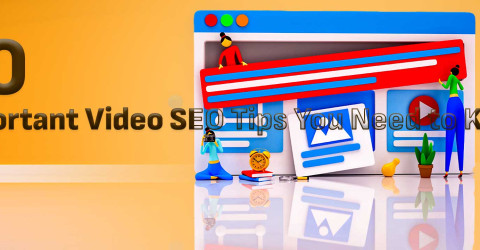

Critical elements in e-commerce website
As an e-commerce Development Company, we have worked on hundreds of online store projects over the years. Through this experience, we've identified core elements that separate the good from the great when it comes to e-commerce websites. Get these fundamentals right from the start, and you'll be off to a strong beginning. Neglect them, and you'll likely face hurdles further down the road.
In the following sections, we'll dig into these essential ingredients for e-commerce success and provide actionable tips for implementation. They encompass both front-end and back-end considerations, from designing a stellar user experience to managing fulfilment logistics.
Our checklist covers:
- User Experience Elements
- Design Factors
- Content Creation
- Technical Features
- SEO Strategies
- Marketing Capabilities
- Back-end Functionality
While this may seem like a long list of items, breaking an e-commerce site down into these focused areas helps simplify what can be an overwhelming process. When executed well across all sections, these elements come together to create a powerful, revenue-driving website.
As an e-commerce Development Services provider, we approach each client project with a holistic vision that ties these pieces together into a cohesive online store. We can provide consulting and hands-on expertise to implement these best practices based on your unique business goals and technical needs.
Now let's explore each of these critical elements for crafting a stellar e-commerce website.
User Experience Elements
Optimizing the user experience (UX) is a central pillar of e-commerce success. Consumers expect intuitive, seamless shopping journeys. Meeting and exceeding those expectations boost satisfaction, engagement, and sales. Some key UX factors include:
Site Navigation
- Implement clear, consistent navigation so customers can easily find what they need. Common elements are top nav bars, breadcrumbs, footer links, and persistent search bars.
- Ensure categories and subcategories are logically organized. Review analytics to see top search terms and adjust navigation accordingly.
- Use descriptive category names like "Dresses" instead of vague labels like "Apparel." Create navigation menu flows that match customer thinking.
- On category pages, include summaries explaining what products can be found. Add shop-by filters like size, colour, and brand to simplify browsing.
Page Speed
- Fast page load times are critical, with 1+ second delays hurting conversions. Enable caching, and compression, minify JavaScript, and leverage a CDN to optimize speed.
- Leverage lazy loading for images/videos below the page fold. Load critical elements first, and defer non-essential items.
- Display page contents quickly even if some assets are still loading. Perceived speed is key.
Mobile Friendliness
- With over 50% of shopping traffic now on mobile, an optimized responsive site is mandatory. Avoid horizontal scrolling, tiny taps targets, and excessive graphics.
- Use flexbox/grid frameworks to gracefully adapt layouts. Test on various devices to catch issues.
- Ensure fast mobile load speeds under 3 seconds. Simplify pages, shrink image file sizes, and enable caching.
Consistent Branding
- Maintain consistent colours, fonts, tone of voice and other brand elements across site pages. Aligns with marketing materials for familiarity.
- Showcase the brand logo prominently. Feature slogan and value proposition on the home page.
- Use branded visuals like custom photography reflecting your products, customers and personality.
- Build trust with the "About Us" page, founder bios, company history and culture. Share your story.
Design Factors
While UX focuses on site functionality, design covers aesthetics - how the e-commerce site looks and feels. Proper design grabs attention while enhancing usability. Hiring an experienced UI designing company that caters to these services is always a good idea. Key elements include:
Product Images
- High-quality product photos are vital - they bring items to life. Use lifestyle shots showing products in context.
- Optimize images (compression, resizing) for fast loading. Offer zoomed views, and alternate angles to see details.
- Make primary images large and crisp. Have consistent image sizes, backgrounds, and framing across products.
- Include multiple variants where relevant - colours, styles, configurations. Help customers visualize options.
Product Information
- Comprehensive descriptions, specs, sizes, and materials help customers make informed purchases. Clear, organized details build trust.
- Bullet point features/benefits. Use highlighting, icons and visual callouts for quick scannability.
- Enable rich content like videos and 360-degree views for high-consideration products. Remove friction to buying.
Page Layouts
- Guide customers towards key actions with visual hierarchy, placement, and contrasts. Make buttons, and CTAs prominent.
- Use whitespace strategically to reduce visual noise. Watch out for overly dense pages without space for browsing.
- Be consistent across pages - product, category, cart, etc. - so familiar patterns boost usability.
Typography
- Choose easy-to-read fonts at sufficient sizes. Avoid hard-to-read decorative fonts for key info like pricing.
- Use heading hierarchy - e.g. H1 for product titles, H2 for sections - for structured pages that improve scannability.
- Limit lengthy paragraphs. Break up text with headers, lists and visuals for comfortable reading.
- Make the body copy dark enough for long-form reading.
Promotional Content
- Spotlight sales, specials and seasonal offers prominently with banners, badges and popups. Time-bound urgency prompts purchases.
- Cross-sell complementary products on item pages, cart, and checkout. Recommended items tick up order values.
- Share email signup offers, social promotions and coupon codes to incentivize subscribers. Capture more customer data.
Content Creation
While design focuses on look and feel, content development centres on the words on the page. Compelling product copy, descriptions and other text boost conversions.
Product Copy
- Focus on benefits for customers.
- Avoid overly flowery marketing speak - be clear and concise to build trust.
- Include keywords naturally to optimize for search. Research buyer keywords and questions to address.
- Outline specs and sizing information to set proper expectations.
Page Content
- Create dedicated pages explaining policies (shipping, returns, etc), your brand story, contact details, and support options.
- Blog articles and videos help inform and engage visitors. Offer "How-to" tutorials, guides, and other value-added content.
- Ensure copy has a consistent tone and messaging aligned with the brand voice. Appoint copy editors to refine.
Email Content
- Send targeted emails like cart abandonment reminders, and welcome sequences for re-engagement. Personalize where possible.
- Promote sales, offer coupon codes and highlight new arrivals to incentivize purchases.
- Share curated content like blog posts and videos to nurture customer relationships beyond transactions.
Technical Elements
Beyond aesthetics and content, technical features optimize e-commerce site performance, security and analytics. Prioritizing these elements ensures a robust, conversion-focused foundation.
Site Security
- Enable HTTPS sitewide and use TLS 1.2+ protocol to encrypt connections and data transfer.
- Integrate Google reCAPTCHA to fight bots on forms. Monitor traffic spikes indicative of DDoS attacks.
- Maintain regular backups, high-availability infrastructure and disaster recovery provisions.
Analytics Integration
- Install Google Analytics, and Tag Manager to collect visitor data and track conversions.
- Analyze trends across traffic sources, devices, geo, pages, and campaigns. Report on ROI.
- Use data to optimize pages and funnel. Examine fall-off rates across funnel stages.
- Integrate chat tools like Intercom to gather UX feedback. Survey customers for input.
Search Functionality
- On-site search is critical for visitors to easily find products. Optimize search relevance and speed.
- Categorize products thoughtfully so searches surface relevant results. Monitor searches without results.
- Offer type-ahead suggestions and corrections for misspellings. Guide customers to the right items.
- Track search terms to identify new keywords, optimize pages, and expand inventory.
Accelerated Mobile Pages (AMP)
- Implement AMP framework to speed up mobile page loads. Pages load nearly instantly from the cache.
- Light-weight AMP pages focus on key content and optimize rendering. Minimal JavaScript and async-loaded iframes.
- Use AMP for product, category and other pages visited frequently on mobile. Improve on-site experience.
Progressive Web Apps (PWAs)
- PWAs act like native apps with install prompts, offline access, and push notifications. Frictionless mobile experience.
- Use service workers to cache static assets so pages load offline or on poor connections. Detect connection speed.
- Send web push notifications to re-engage users. Announce sales, new products, or order updates.
Payment Options
- Offer preferred payment methods like Visa, Mastercard, PayPal, and Apple Pay based on your customers and market.
- Enable saved payment options and digital wallets for one-click checkouts. Reduce abandonments from re-entering details.
- Offer instalment plans like AfterPay where possible to increase purchasing power and ticket sizes.
Site Uptime and Performance
- Minimize downtime with auto-scaling cloud hosting, multiple server instances, and regular tests under load.
- Benchmark site speed and optimize regularly. Fix errors, enable compression, caching, and other best practices.
- Monitor the site actively through external monitoring tools. Get alerts for outages, slow load times, and error spikes.
SEO Strategies
Optimizing for search helps customers find your e-commerce store for relevant product queries.
Keyword Research
- Identify high-value search queries customers use to research products in your niche. Analyze search volumes and competition levels to guide strategy.
- Optimize pages and content to rank for these keywords while staying relevant. Include keywords naturally in titles, URLs, meta descriptions, and image names.
Title Tags & Meta Descriptions
- Write tags that generate clicks from search engines.
- Include primary keywords and differentiate titles across pages. Keep under 55 characters for titles.
- Write meta descriptions 150-160 characters long that describe the page and highlight your differentiators.
Content Optimization
- Create useful, keyword-optimized product descriptions, buying guides, and blog content pillars targeting search queries.
- Update old thin content to be more comprehensive.
- Produce new long-form content regularly like "Best [Brand] Products for [Purpose]" to capture new keywords.
Technical Optimization
- Ensure the site is mobile-friendly and loads quickly. Avoid burying text in images. Enable AMP.
- Have XML site maps and robots.txt to guide search engine crawlers. Submit new URLs in the Search Console.
- Optimize image file names, and alt text for keywords too. Clean up broken links, and 404 errors.
Local SEO
- Rank for searches looking for local stores. Optimize Google My Business listing with location info and product photos.
- Motivate customers to give genuine reviews on GMB to build citations and relevance.
- Create unique content for each location like "Best Boutiques in Austin" showcasing your store.
Marketing Capabilities
While SEO and content attract organic visitors, marketing initiatives drive qualified traffic directly to your site through paid ads, email, and social campaigns.
Paid Ads
- Run targeted product ads on Google Shopping, Facebook, and Instagram to put products in front of interested buyers already browsing those platforms.
- Retarget visitors with custom display ads across the web to reconnect with those who left your site. Win back abandoned carts.
- Ensure landing pages match ad messaging. Track conversions from each campaign to optimize bids, creatives, and targets.
Email Marketing
- Collect customer emails and send targeted messages with promotions, content offers, new product announcements, surveys, and more.
- Set up automation like browse abandonment emails, shopping cart recovery sequences, and personalized recommendations based on purchase history.
- Segment your list by customer attributes and behaviors to tailor content and increase relevancy. Monitor engagement rates.
Social Media Marketing
- Share products, styling tips, behind-the-scenes content on Instagram, Facebook, and other platforms where your audience is active.
- Run sweepstakes, giveaways and other engaging contests to grow followers and email subscribers.
- Create shoppable Instagram posts and Facebook Catalogs to inspire purchasing directly from social sites.
Back-end Functionality
While customers interact with the front-end website, behind-the-scenes infrastructure powers business operations, order processing, and customer service.
Inventory Management
- Track product inventory levels in real time across locations and sales channels. Prevent overselling.
- Integrate inventory with order management. Automatically update counts when items sell.
- Use inventory management software and sensors for analytics, reordering, waste reduction in warehouses.
Order Management
- Process and fulfill orders accurately and quickly. Integrate smoothly with payment gateways, shipping carriers.
- Offer self-service account dashboards where customers can track orders, view history, check statuses.
- For physical goods, enable drop shipping or use 3PLs to simplify logistics and accelerate delivery.
Customer Support
- Offer pre-sales and post-sales support via self-service help guides, chatbots, phone, email, and messaging.
- Monitor support requests to identify FAQs and opportunities to improve site usability.
- Share shipping and tracking notifications and enable customers to reschedule deliveries as needed.
- Respond to inquiries, complaints and returns promptly and empathetically. Provide individualized attention.
Data Security
- Protect sensitive customer data like names, addresses, payment info with encryption and access controls.
- Conduct regular external security audits and vulnerability scans. Establish incident response plans.
- Enable MFA, limit employee access, secure APIs with keys and monitor activity logs to prevent insider threats.
Fraud Prevention
- Utilize AI to identify and blacklist stolen payment details, suspicious logins, and phishing attempts in real time.
- Analyze past chargebacks and fraud patterns like account takeovers to refine detection rules.
- Require additional authentication steps like SMS codes, reCAPTCHAs for risky transactions like high-value purchases or changes to account details.
Key Takeaways
Crafting an exceptional e-commerce experience requires meticulous execution across a wide range of factors - from engaging visual design to secure infrastructure. By focusing on these core elements, you can create a site that delights customers, drives conversions and sales growth for your business over the long term.
If you need an experienced partner to bring this vision to life, contact our expert e-commerce development team today. We offer end-to-end services - from UX design and content creation to technical development and marketing integrations - tailored to your unique requirements.
Recent Posts
Critical elements in e-commerce website
How to do Social Media Marketing Automation?
10 Important Video SEO Tips You Need to Know
How to Attract Customers to Your eCommerce Store
What Are the Best SEO Strategies
How to do Local SEO for Large Enterprises
Shopify SEO Checklist to Rank on Search Engine
The Ultimate Guide to The Meta Robots Tag
What is SEO Marketing
How to Set up Google Analytics (GA4)
What is Schema Markup
What is Digital marketing
How to Drive More Traffic to Your Website
Why is Digital Marketing Significant
Tips for Scaling your SEO Content Strategy
Link-building Techniques You must know!
Advanced Content Promotion Strategies for 2022
The Ultimate Guide to Technical SEO
Best Digital Marketing Strategies for Startups
Ultimate List of Ecommerce Tools for 2022
Website Design Statistics You Should Know In 2022
How to do SEO for Ecommerce Website
How to Optimize Blog Posts for SEO
How to Build an Ecommerce Website Step-by-Step
Blog Categories
Comments on Critical elements in e-commerce website
Please keep your views respectful and not include any anchors, promotional content or obscene words in them. Such comments will be definitely removed and your IP be blocked for future purpose.




